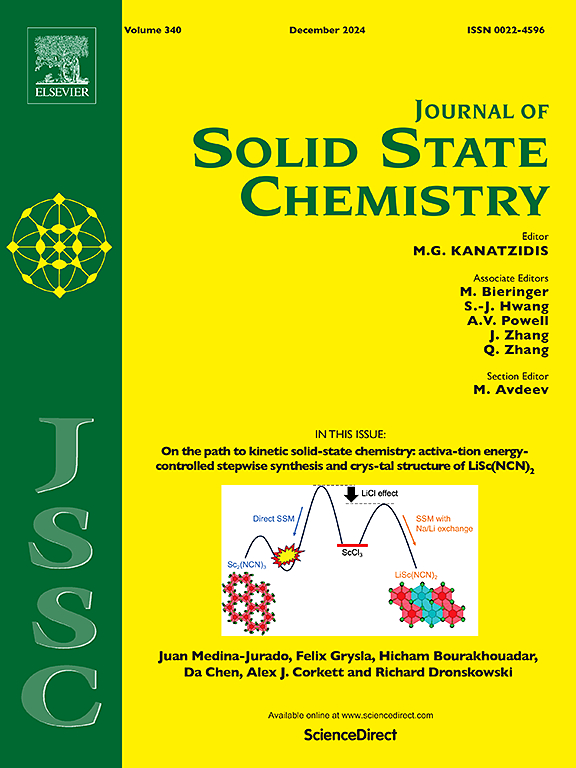Removal of Cs+ from chloride-containing spent salt by combined precipitation and ion exchange and its glass solidification
IF 3.5
3区 化学
Q2 CHEMISTRY, INORGANIC & NUCLEAR
引用次数: 0
Abstract
In order to reduce the volume of nuclear waste, the spent salt after electrolysis refining of spent fuel needs to be purified and the removed radioactive nuclide need to be vitrified. In this work, the radioactive nuclides Cs+ in spent salt was removed by a two-step method, and the waste containing Cs after removal was solidified. The results showed that the total removal rate of Cs+ in spent salt could reach 94 %, and the maximum inclusion ratio of borosilicate glass to precipitated cesium phosphate (Cs3PO4) and zeolite-4A containing cesium could reach 30 wt% and 35 wt%, respectively. The glass samples with the embedding ratio less than or equal to the maximum were found to be all amorphous, uniform and dense. The normalized leaching rate (NRi) of Cs+ in the two types of glass samples were 3.245 × 10−4 g m−2 d−1 and 1.145 × 10−5 g m−2 d−1 on the 28th day, respectively, showing good chemical durability, which met the geological disposal standards.

沉淀-离子交换法脱除含氯废盐中的Cs+及其玻璃固化
为了减少核废料的体积,需要对乏燃料电解精炼后的废盐进行提纯,并对除去的放射性核素进行玻璃化处理。本研究采用两步法去除废盐中的放射性核素Cs+,并对去除后的含Cs废弃物进行固化处理。结果表明,废盐中Cs+的总去除率可达94%,硼硅酸盐玻璃与沉淀磷酸铯(Cs3PO4)和含铯沸石- 4a的最大包合率分别可达30 wt%和35 wt%。当包埋比小于或等于最大值时,玻璃样品均为非晶态,均匀致密。第28天,两类玻璃样品Cs+的归一化浸出率(NRi)分别为3.245 × 10−4 g m−2 d−1和1.145 × 10−5 g m−2 d−1,具有良好的化学耐久性,符合地质处置标准。
本文章由计算机程序翻译,如有差异,请以英文原文为准。
求助全文
约1分钟内获得全文
求助全文
来源期刊

Journal of Solid State Chemistry
化学-无机化学与核化学
CiteScore
6.00
自引率
9.10%
发文量
848
审稿时长
25 days
期刊介绍:
Covering major developments in the field of solid state chemistry and related areas such as ceramics and amorphous materials, the Journal of Solid State Chemistry features studies of chemical, structural, thermodynamic, electronic, magnetic, and optical properties and processes in solids.
 求助内容:
求助内容: 应助结果提醒方式:
应助结果提醒方式:


